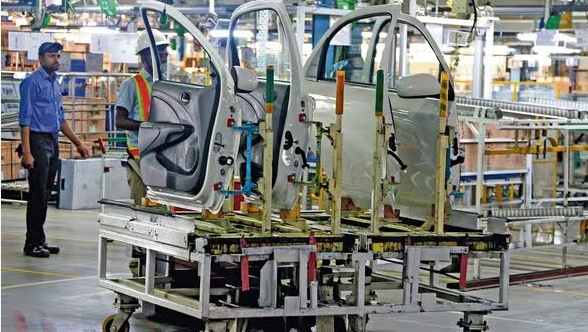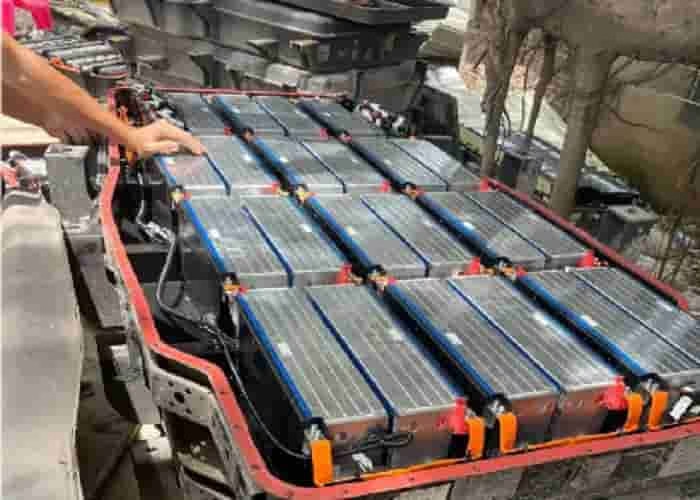The money saved on fuel has turned into a jumping number on the insurance policy in a blink of an eye. Why is the insurance of new energy vehicles getting more and more expensive?
01 Maintenance dilemma, the technical root of high premiums
The structural characteristics of new energy vehicles have become the primary factor in pushing up maintenance costs. Compared with the 4-6 year technology iteration cycle of fuel vehicles, the technology iteration cycle of new energy vehicles has been shortened to 1 year. For example, millimeter wave radar may be upgraded to laser radar the following year.
High frequency iteration leads to low versatility of parts and high maintenance costs. More importantly, new energy vehicles generally adopt highly integrated manufacturing methods such as integrated die-casting technology. This design often requires the replacement of the entire component assembly rather than a single part after an accident.
An industry insider revealed: “The maintenance cost after a minor collision may be as high as thousands of yuan, which is several times that of the same type of fuel vehicle.” The most shocking thing is the power battery-the replacement cost of a battery pack can even reach 40% of the car price. The cost of the three-electric system has accounted for 70%-75% of the price of the whole vehicle, fundamentally pushing up the insurance compensation benchmark.
The monopoly of maintenance channels has further exacerbated the problem. New car companies such as Tesla, Xiaopeng, and Weilai control the after-sales system through direct maintenance centers, and the supply of spare parts has formed a “one-man show” pricing.
Data analysis company We Predict found that the maintenance cost of electric vehicles is 2.3 times that of fuel vehicles, the maintenance time is 1.5 times longer, and the labor cost is 1.3 times higher.
02 Accident rate, the dangerous curve behind the data
The driving characteristics and usage scenarios of new energy vehicles have planted the seeds of higher accident rates. The superior 100-meter acceleration performance is like a double-edged sword-although it improves the driving experience, it also increases instantaneous risks.
Kinetic energy recovery and single-pedal mode require changes in traditional driving habits, while the driving experience of young car owners (the main users of new energy vehicles) is relatively insufficient. The superposition of multiple factors has led to a significantly higher frequency of accidents than fuel vehicles.
The “gray area” of vehicle use also pushes up the overall risk. A large number of new energy vehicles are used for online car-hailing operations, but they are still insured as non-operational household vehicles. The average annual mileage of operating vehicles can reach 60,000-80,000 kilometers, far exceeding the 10,000-20,000 kilometers of ordinary family cars, and the probability of accidents naturally increases exponentially.
When such vehicles are in danger during passenger operation, insurance companies often refuse to pay compensation due to “changing the nature of vehicle use”, causing more claims disputes.
The China Banking and Insurance Information Report reveals the cold data reality: the accident rate of household new energy vehicles is 9.3% higher than that of fuel vehicles. And the industry data in 2024 shows that the underwriting loss of new energy vehicle insurance reached 5.7 billion yuan, and the number of car series with a compensation rate of more than 100% was as high as 137.
03 The dilemma of new forces, why Tesla has higher premiums
In the field of new energy vehicle insurance, different brands of models face completely different treatments. Many insurance company staff members bluntly said: “9 out of 10 Teslas have increased premiums”, and Xiaopeng and Weilai are also included in the list of “high-risk models”.
Pacific Auto Insurance staff revealed: “If Tesla owners have more than two accidents last year, some companies will directly refuse insurance.”
This differentiated treatment stems from three realistic factors. The parts-to-whole ratio of new energy models remains high – taking Tesla Model 3 as an example, the separate procurement cost of its battery assembly is about 180,000 yuan, which is almost equivalent to the price of a new mid-range fuel vehicle.
The insufficient market ownership makes it impossible for insurance companies to spread risks through the “law of large numbers”. The most fundamental thing is the monopoly of maintenance channels. New energy brands control the supply of parts through the direct sales system, resulting in the pricing power of maintenance being completely in the hands of car companies.
04 The way out, dual changes in policies and technology
Faced with systemic problems, the regulatory authorities launched a combination of punches in January 2025. The Financial Regulatory Administration and other four departments jointly issued the first special guidance on new energy vehicle insurance, proposing to establish a high-payout risk sharing mechanism.
The next day, the “Auto Insurance Good Insurance” platform was quickly launched, and the first batch of 10 large and medium-sized property insurance companies were connected, forcing high-risk vehicles to “not refuse insurance.” Beijing car owner Mr. Chen insured through the platform, and the premium was reduced from 7,000 yuan to 4,475 yuan, a decrease of 36%.
Policy innovation directly hits the pain point: “Basic + variable” auto insurance combination: allowing online ride-hailing vehicles to be dynamically insured during operating hours; vehicle-battery separation insurance model: providing precise protection for battery leasing models; insurance model risk classification: new cars must undergo a 15km/h low-speed collision test to evaluate the repair cost before they are launched.
At the same time, insurance companies are reconstructing their pricing models. China Taiping has built a dedicated database for new energy vehicles, increasing the risk differentiation of different customer groups by more than two times. Tai Ping Property Insurance has established a centralized claims settlement model to share parts prices and accident data with automakers in real time.
The New Energy Inspection Center of China Automotive Technology and Research Center has taken a step further and launched innovative products such as “combined assisted driving insurance” to fill the gap in protection in the era of intelligent driving.
05 The road to the future, from passive compensation to risk prevention
The forefront of the industry is transitioning from traditional insurance to technology-driven protection. In the laboratory of China Automotive Research Institute, engineers accumulate key data through vehicle fire simulation tests-they arrange 60 sensors on the body to monitor various parameters from toxic gas concentration to thermal radiation intensity.
These experiments revealed unexpected hidden dangers: hidden door handles hinder escape when the electronic system fails; improper design of high-voltage wire perforations will accelerate the influx of toxic gases into the car. The research results are being transformed into safety design standards, forcing automakers to optimize maintainability.
The popularization of intelligent driving will reshape the logic of auto insurance. The Financial Regulatory Bureau clearly pointed out that driving risk factors are shifting from “people” to “technology”. When the autonomous driving system assumes responsibility, the main body of accident liability may shift to automakers and technology suppliers.
The UBI (pricing based on driving behavior) auto insurance model has taken shape. Tesla’s “real-time driving behavior insurance” launched in the United States confirms Elon Musk’s prediction: “The value of insurance business will account for 30%-40% of the value of the whole vehicle business.”
Risk reduction management has become a new direction: early identification and early prevention of risks through Internet of Vehicles technology, combined with driving behavior data analysis to provide personalized safety guidance.
The data barriers between insurance companies and automakers are collapsing. The exclusive database for new energy vehicles built by China Taiping has increased risk differentiation by more than two times; China Automotive Technology and Research Center has launched a special insurance product for “combined assisted driving”.
As smart driving becomes more popular, UBI (usage-based pricing) auto insurance is on the rise. When Tesla launched real-time driving behavior insurance in the United States, Musk predicted: “The value of insurance business will account for 30% to 40% of the value of the entire vehicle business.” When the autonomous driving system gradually takes over control, the future auto insurance model may shift from “compensating accidents” to “ensuring system safety.” Those battery packs burning in the laboratory and the integrated car bodies deformed in the collision test will eventually refine a fairer insurance model.
Why is new energy vehicle insurance becoming more and more expensive?
















Leave a Reply